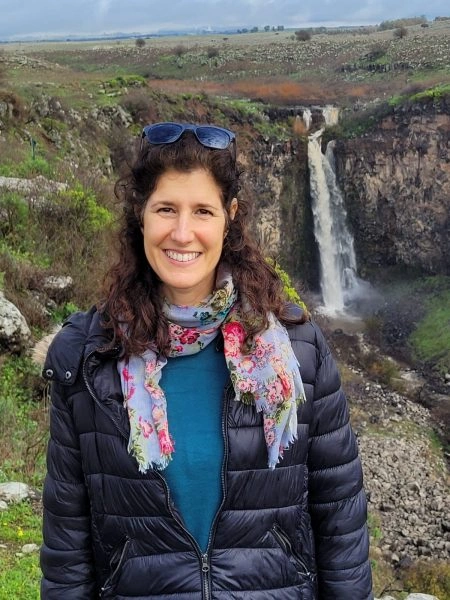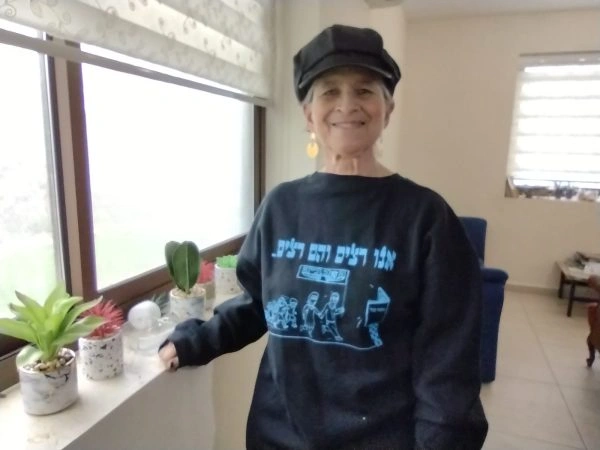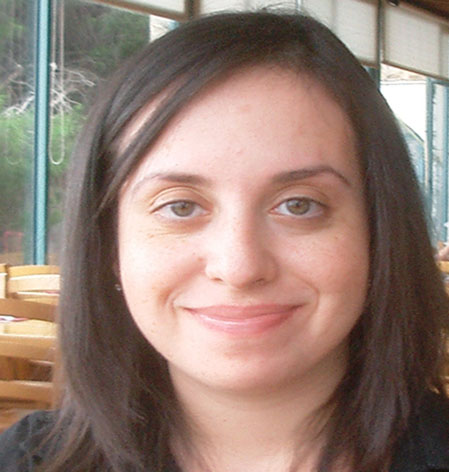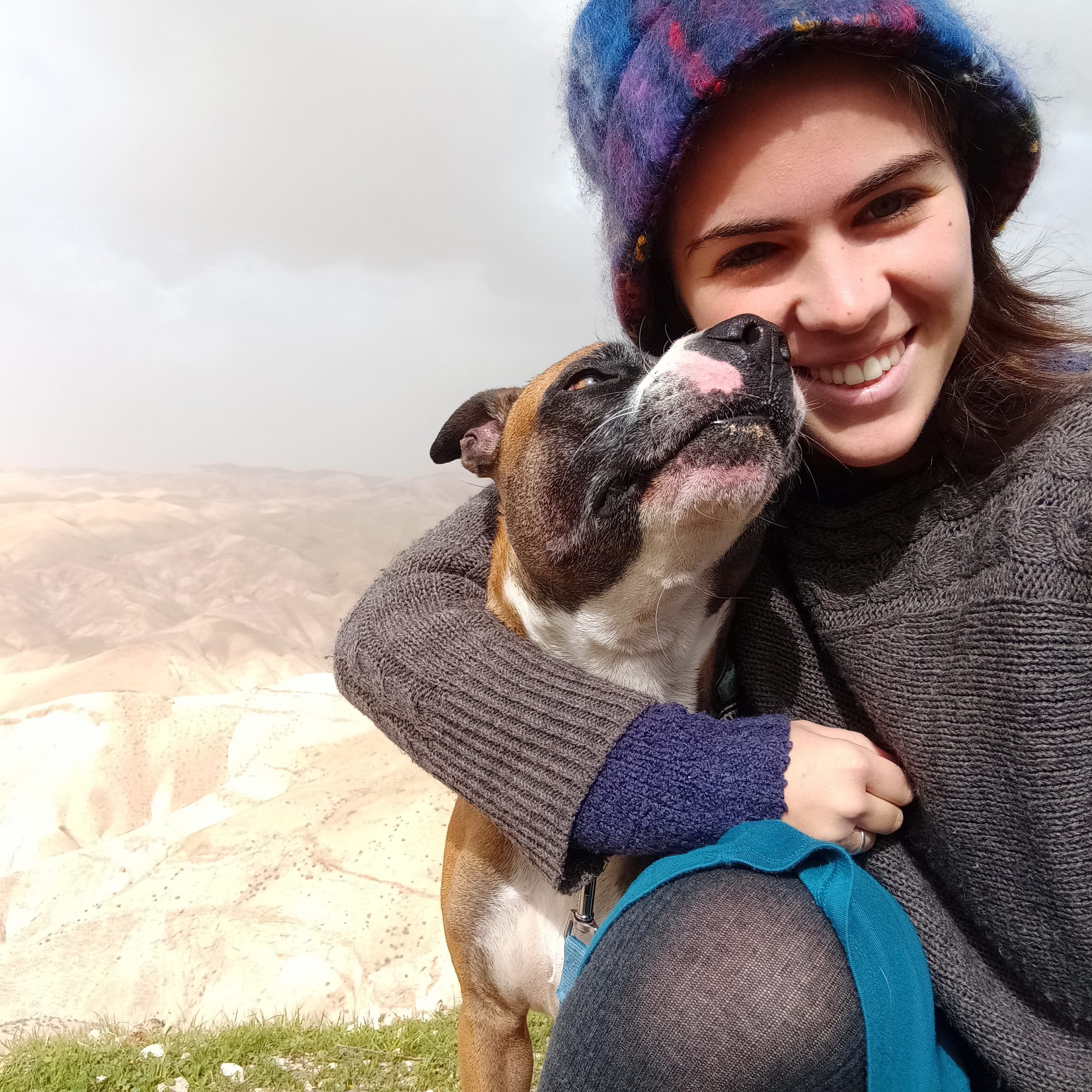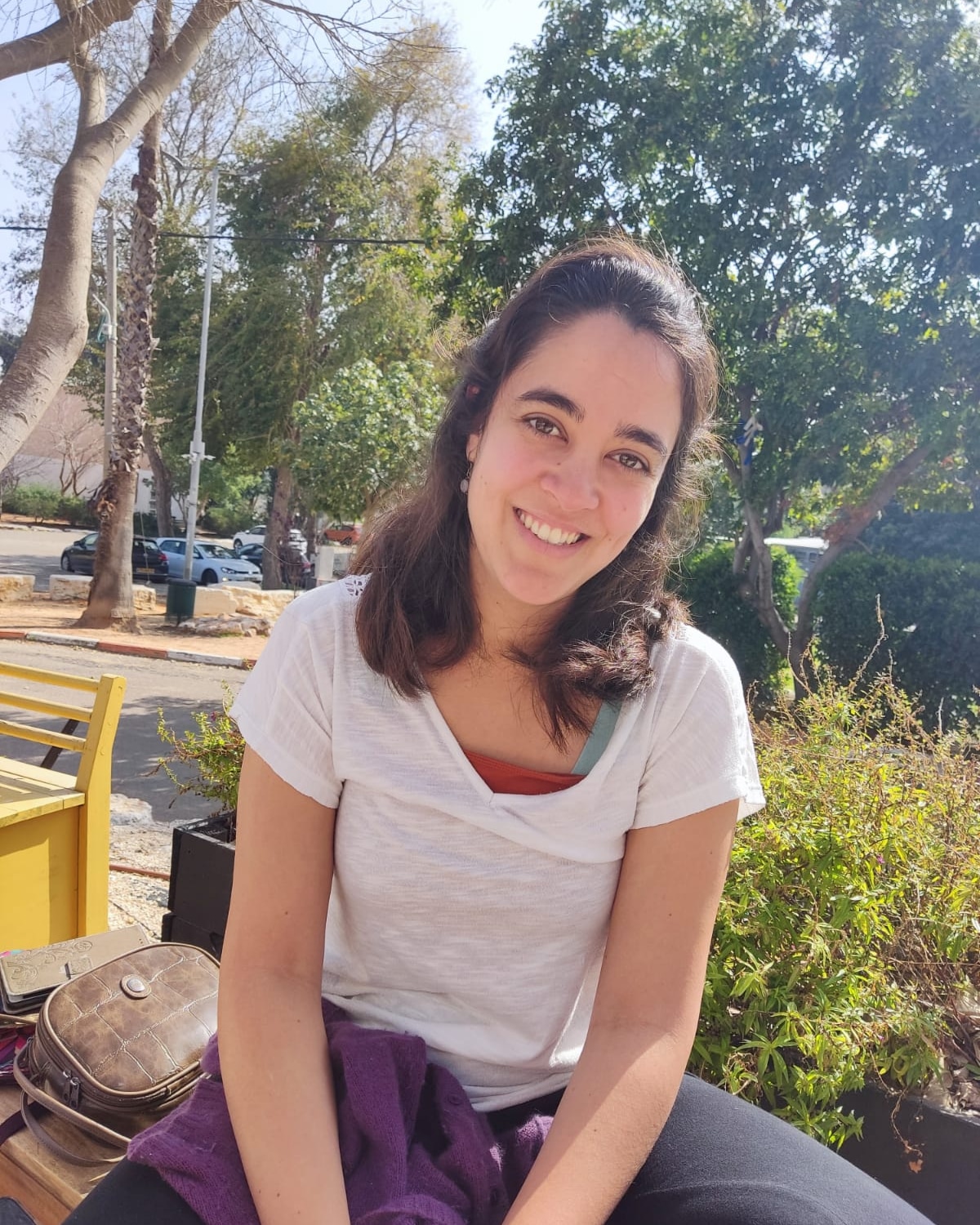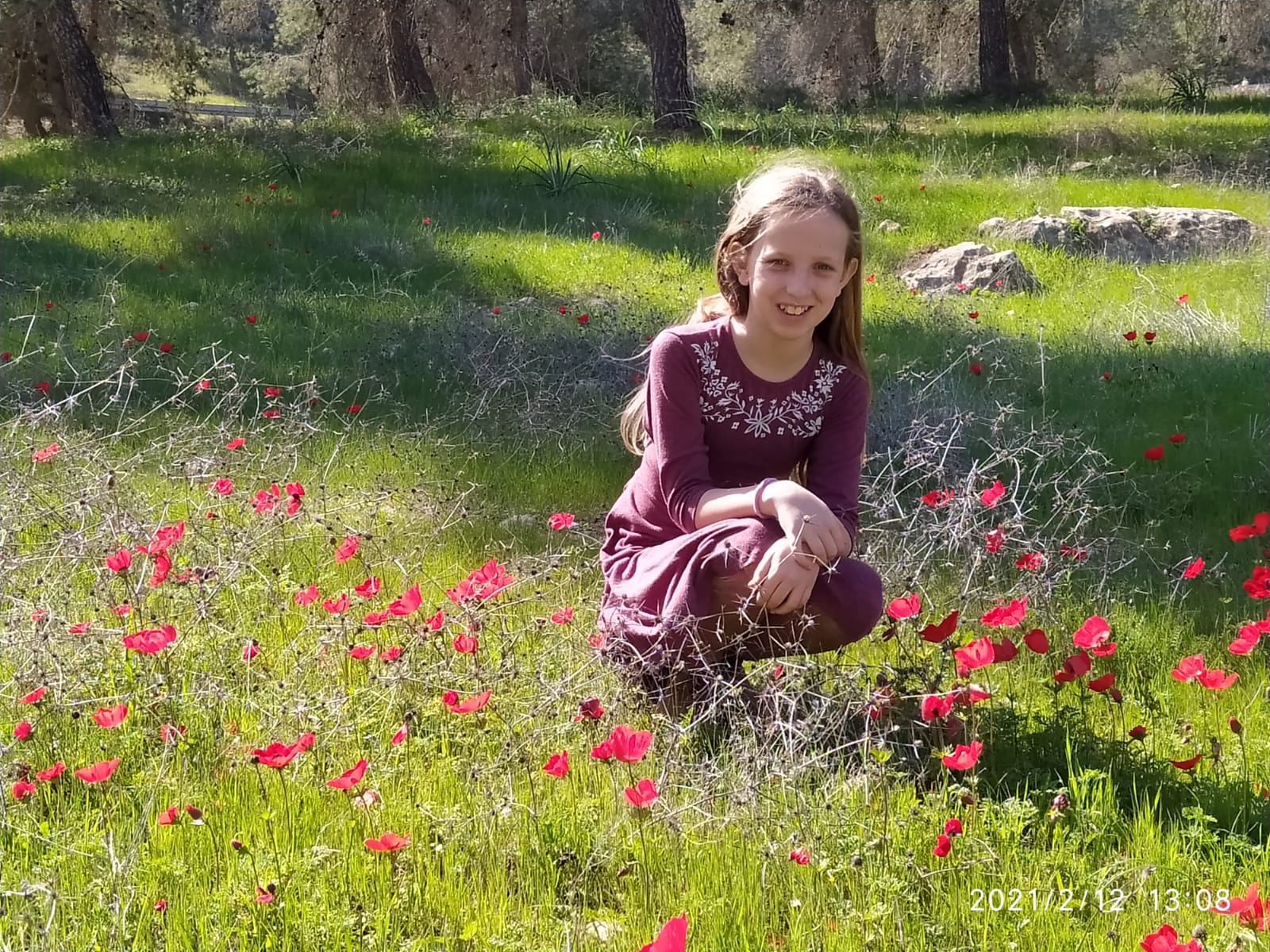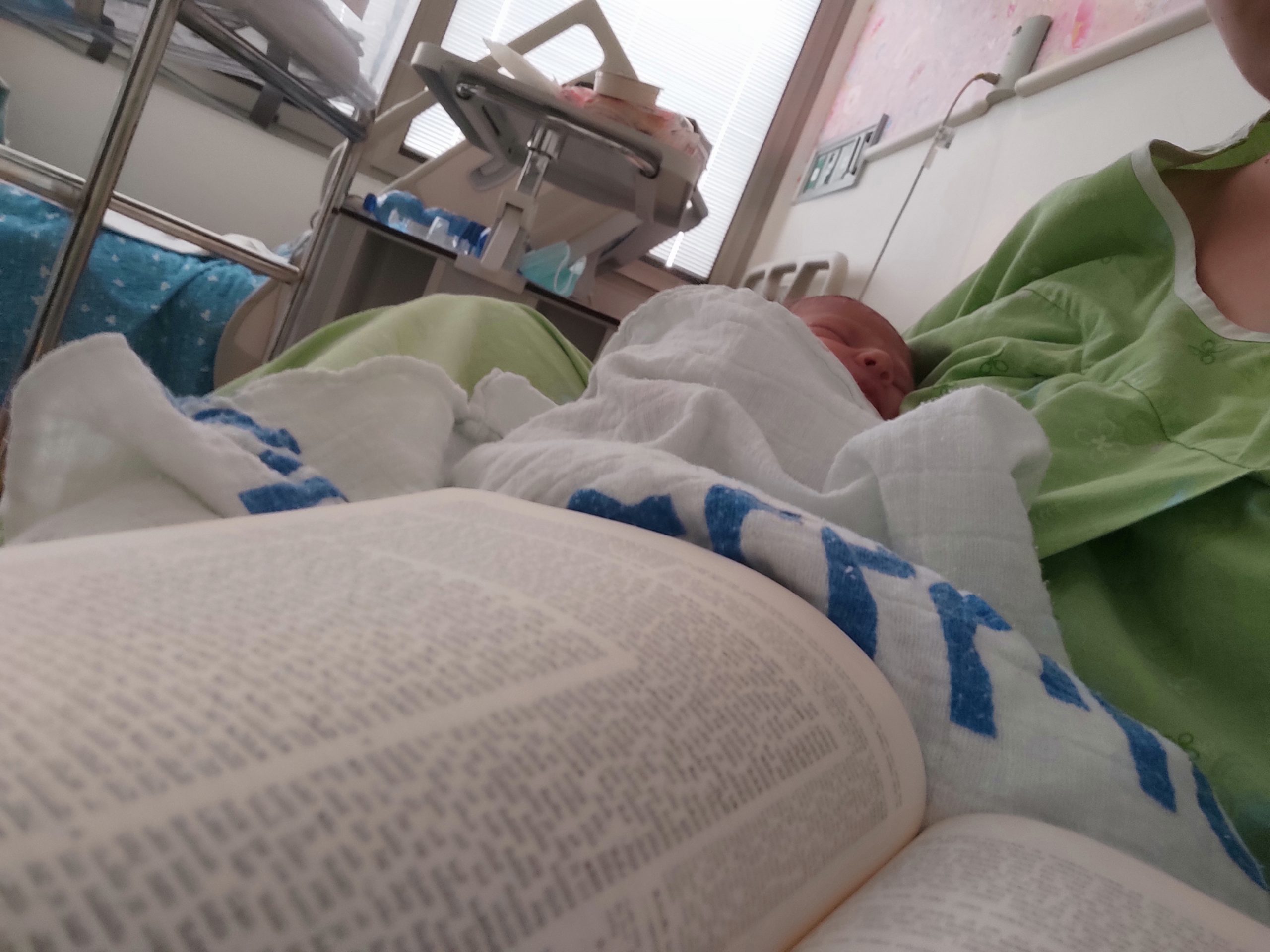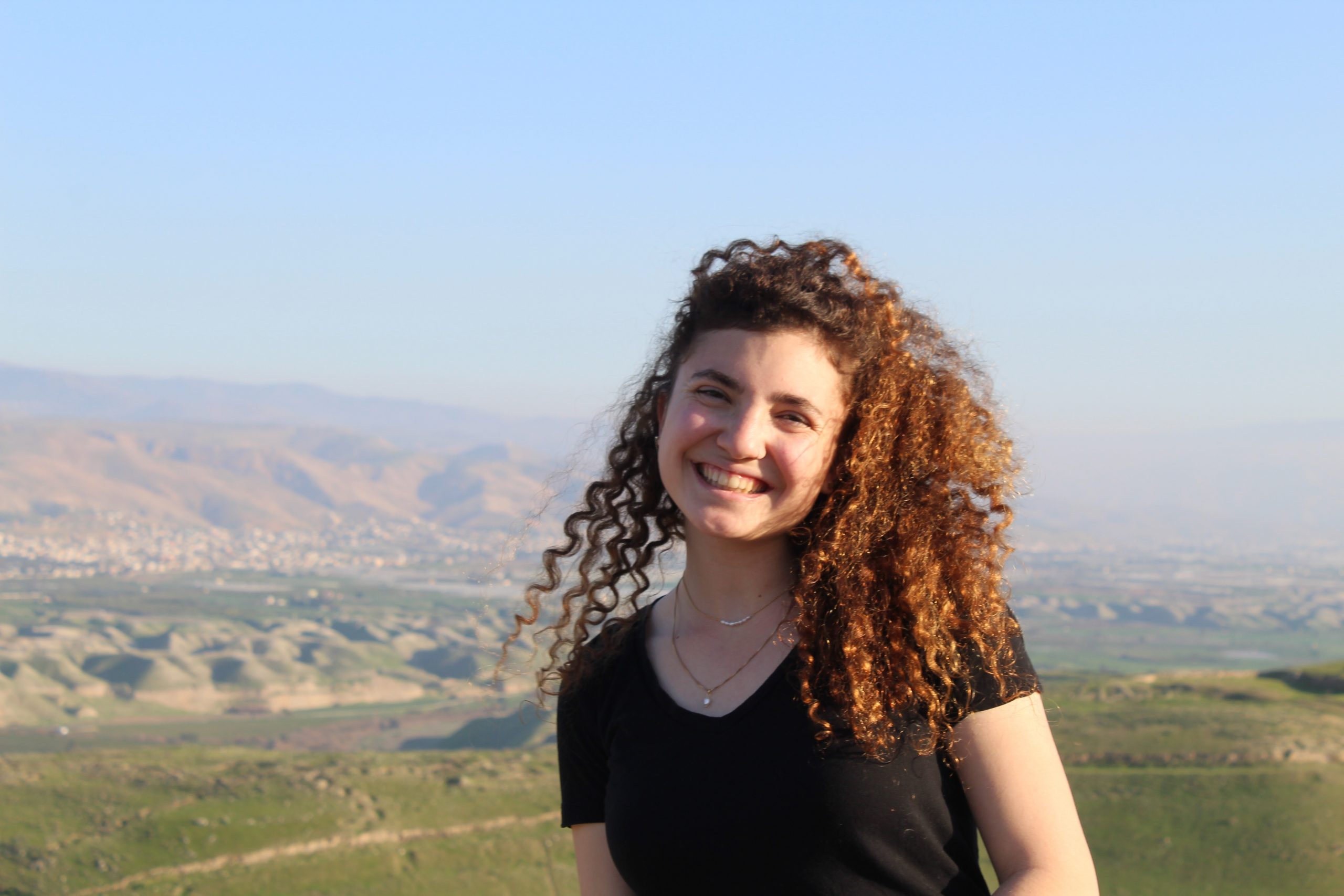יומא מב
שֶׁל פָּרָה — מִשְׁקַל עֲשָׂרָה זוּז, וְשֶׁל שָׂעִיר הַמִּשְׁתַּלֵּחַ — מִשְׁקַל שְׁנֵי סְלָעִים, וְשֶׁל מְצוֹרָע — מִשְׁקַל שֶׁקֶל.
The strip of crimson of the red heifer has the weight of ten zuz; and the strip of the scapegoat has the weight of two sela, which is eight zuz; and the strip of the leper has the weight of a shekel, which is two zuz.
אָמַר רַבִּי יוֹחָנָן: פְּלִיגִי בַּהּ רַבִּי שִׁמְעוֹן בֶּן חֲלַפְתָּא וְרַבָּנַן בְּפָרָה, חַד אָמַר: מִשְׁקַל עֲשָׂרָה, וְחַד אָמַר: מִשְׁקַל שֶׁקֶל. וְסִימָנָיךְ: ״אֶחָד הַמַּרְבֶּה וְאֶחָד הַמַּמְעִיט״.
And Rabbi Yoḥanan further said: Rabbi Shimon ben Ḥalafta and the Rabbis disagree with regard to the strip of crimson of the red heifer. One said: It has the weight of ten zuz. And one said: It has the weight of one shekel. And your mnemonic for remembering that while both assume that only one of the extreme values was required no one suggests the middle value of two sela is required, is the aphorism from a mishna: God equally values both the one who gives much and the one who gives little as long as his intention is to Heaven.
אֲמַר לֵיהּ רַבִּי יִרְמְיָה מִדִּיפְתִּי לְרָבִינָא: לָא בְּפָרָה פְּלִיגִי, אֶלָּא בְּשָׂעִיר הַמִּשְׁתַּלֵּחַ פְּלִיגִי. וְהָהוּא יוֹמָא נָח נַפְשֵׁיהּ דְּרַבְיָא בַּר קִיסִי, וְאַנְּחוּ בַּהּ סִימָנָא: רַבְיָא [בַּר] קִיסִי מְכַפֵּר כְּשָׂעִיר הַמִּשְׁתַּלֵּחַ.
Rabbi Yirmeya of Difti said to Ravina: It is not with regard to the strip of the red heifer that they disagree; rather, it is with regard to the strip of the scapegoat that they disagree. And on that very day that they disputed this issue, Ravya bar Kisi died, and they made a mnemonic out of it, associating the halakha with his name: The death of Ravya bar Kisi atones like the scapegoat, since the death of the righteous person atones for his generation.
אָמַר רַבִּי יִצְחָק: שְׁתֵּי שְׁחִיטוֹת שָׁמַעְתִּי, אַחַת שֶׁל פָּרָה, וְאַחַת שֶׁל פָּרוֹ. אַחַת כְּשֵׁרָה בְּזָר, וְאַחַת פְּסוּלָה בְּזָר, וְלָא יָדַעְנָא הֵי מִינַּיְיהוּ.
Rabbi Yitzḥak said: I heard a teaching that there is a distinction between two slaughters: One of the red heifer, and one of the bull of the High Priest on Yom Kippur. The slaughter of one of them is valid even if done by a non-priest, and the slaughter of the other one is invalid if done by a non-priest. But I do not know which of them is which.
אִיתְּמַר: שְׁחִיטַת פָּרָה וּפָרוֹ, רַב וּשְׁמוּאֵל. חַד אָמַר: פָּרָה פְּסוּלָה, פָּרוֹ כְּשֵׁרָה. וְחַד אָמַר: פָּרוֹ פְּסוּלָה, פָּרָה כְּשֵׁרָה.
An amoraic dispute was stated: With regard to the slaughter of the red heifer and the bull of the High Priest on Yom Kippur, there is a dispute between Rav and Shmuel: One said: A red heifer slaughtered by a non-priest is invalid, whereas the bull of the High Priest slaughtered by a non-priest is valid. And the other one said: His bull is invalid, but the red heifer is valid.
תִּסְתַּיֵּים דְּרַב הוּא דְּאָמַר פָּרָה פְּסוּלָה, דְּאָמַר רַבִּי זֵירָא: שְׁחִיטַת פָּרָה בְּזָר פְּסוּלָה, וְאָמַר רַב עֲלַהּ: ״אֶלְעָזָר״ וְ״חוּקָּה״ שָׁנִינוּ בָּהּ.
The Gemara comments: Conclude that it is Rav who said that if the heifer is slaughtered by a non-priest it is invalid, as Rabbi Zeira said: The slaughter of the heifer by a non-priest is invalid. And Rav said concerning this statement of Rabbi Zeira: This is because we learned in the Torah’s description of the slaughter of the red heifer both “Elazar the priest” (Numbers 19:3) and “statute” (Numbers 19:2). Because Elazar is mentioned, it indicates the slaughter should be performed by a priest, and the use of the term “statute” teaches that one may not deviate from any of the details of the service as delineated in the verses; if one does deviate, the service is invalid. Clearly then, Rav held that if the heifer is slaughtered by a non-priest it is invalid.
וְרַב, מַאי שְׁנָא פָּרָה — דִּכְתִיב ״אֶלְעָזָר״ וְ״חוּקָּה״, פָּרוֹ נָמֵי — הָא כְּתִיב ״אַהֲרֹן״ וְ״חוּקָּה״!
The Gemara analyzes Rav’s opinion: And according to Rav, what is different with regard to the red heifer, that if it is slaughtered by a non-priest it is invalid? As Rav explained, it is different in that, with regard to it, it is written “Elazar” and “statute.” But with regard to the bull of the High Priest it is also written “Aaron” the High Priest (Leviticus 16:11) and “statute” (Leviticus 16:34). Based on Rav’s logic, that indicates that the priest is indispensable.
שְׁחִיטָה לָאו עֲבוֹדָה הִיא. אִי הָכִי פָּרָה נָמֵי! שָׁאנֵי פָּרָה, דְּקׇדְשֵׁי בֶּדֶק הַבַּיִת הִיא.
The Gemara explains: The slaughter of the bull by a non-priest is valid because slaughtering is not classified as a sacrificial service; therefore, it does not have to be done by a priest. The Gemara challenges this answer: If so, by the same logic, the red heifer should also be valid when slaughtered by a non-priest. The Gemara concludes: The logic that slaughtering is not classified as a sacrificial service does not apply in the case of the red heifer because the red heifer is different. It has the sanctity of items consecrated for Temple maintenance, and therefore the principles that apply to other offerings do not necessarily apply to it.
וְלָאו כָּל דְּכֵן הוּא? אָמַר רַב שִׁישָׁא בְּרֵיהּ דְּרַב אִידִי: מִידֵּי דְּהָוֵה אַמַּרְאוֹת נְגָעִים, דְּלָאו עֲבוֹדָה הִיא וּבָעֲיָא כְּהוּנָּה.
But is it not arguable, by an a fortiori inference, that the slaughter of the red heifer by a non-priest is valid? If the slaughter of the bull of the High Priest, which is an actual offering, is valid when performed by a non-priest, then all the more so the slaughter of the red heifer, which is not an offering, should be valid when similarly performed by a non-priest. Rav Shisha, son of Rav Idi, said: The slaughter of the red heifer by a non-priest is invalid. The halakha is just as in the case of appearances of leprosy, which, despite their not being a sacrificial service, still require the priesthood. Only a priest may declare the signs of leprosy to be pure or impure. It is apparent from this case that the logic of the a fortiori inference does not hold.
וְלִשְׁמוּאֵל, דְּאָמַר פָּרוֹ פְּסוּלָה, מַאי שְׁנָא פָּרוֹ — דִּכְתִיב: ״אַהֲרֹן״ וְ״חוּקָּה״, פָּרָה נָמֵי — הָא כְּתִיב: ״אֶלְעָזָר״ וְ״חוּקָּה״? שָׁאנֵי הָתָם, דִּכְתִיב: ״וְשָׁחַט אוֹתָהּ לְפָנָיו״, שֶׁיְּהֵא זָר שׁוֹחֵט וְאֶלְעָזָר רוֹאֶה.
The Gemara analyzes Shmuel’s opinion: And according to Shmuel, who said that if a non-priest slaughters the bull of the High Priest it is invalid, what is different with regard to his bull that this is the halakha? It is different in that, with regard to it, it is written “Aaron,” indicating that a priest is required, and “statute,” indicating that the requirements of the Yom Kippur service are indispensable. But with regard to the red heifer it is also written: “Elazar” and “statute” which by the same logic should indicate the need for a priest is indispensable. The Gemara concludes: It is different there as it is written: “And he shall slaughter it before him” (Numbers 19:3), i.e., in front of Elazar, which suggests that it could be that a non-priest slaughters and Elazar watches.
וְרַב: שֶׁלֹּא יַסִּיחַ דַּעְתּוֹ מִמֶּנָּה. וּשְׁמוּאֵל, שֶׁלֹּא יַסִּיחַ דַּעְתּוֹ מְנָא לֵיהּ? נָפְקָא לֵיהּ: מִ״וְּשָׂרַף אֶת הַפָּרָה לְעֵינָיו״.
And Rav, who assumes the slaughter is performed by the priest himself, how does he interpret the phrase: “Before him”? He understands it to mean that he should not divert his attention from the heifer from the moment of slaughtering until the completion of the process. As with other matters of purification, one is required to maintain his attention on the matter; any distraction can invalidate the process. And from where does Shmuel, who already derived something from this verse, derive that he should not divert his attention from it? He derives it from the verse: “And he shall burn the heifer in his sight” (Numbers 19:5).
וְרַב: חַד בִּשְׁחִיטָה וְחַד בִּשְׂרֵיפָה.
And what does Rav learn from this verse? He holds that one verse is needed to teach the requirement to maintain one’s attention with regard to slaughtering, and one verse is needed to teach the requirement with regard to burning.
וּצְרִיכָא, דְּאִי כְּתַב רַחֲמָנָא בִּשְׁחִיטָה — מִשּׁוּם דִּתְחִילַּת עֲבוֹדָה הִיא, אֲבָל שְׂרֵיפָה — אֵימָא לָא, צְרִיכָא. וְאִי כְּתַב רַחֲמָנָא בִּשְׂרֵיפָה — מִשּׁוּם דְּהַשְׁתָּא הוּא דְּמִתַּכְשְׁרָא פָּרָה, אֲבָל שְׁחִיטָה — אֵימָא לָא, צְרִיכָא.
And it is necessary to have the requirement stated in both cases since, if the Merciful One had written it only with regard to slaughtering, I might have limited the requirement to that case because it is the start of the Temple service; but with regard to burning, I could say that no, there is no requirement. Therefore, it is necessary to teach the requirement also in the case of burning. And if the Merciful One had written the requirement only with regard to burning, I might have limited it to that case, because it is now that the heifer is actually being made ready to be used; but with regard to slaughtering, I could say that no, there is no requirement. Therefore, it is necessary to teach the requirement also in that case.
לְמַעוֹטֵי מַאי? אִילֵּימָא לְמַעוֹטֵי אֲסִיפַת אֶפְרָהּ וּמִילּוּי מַיִם לְקִידּוּשׁ,
As the requirement is mentioned with regard to two stages of the rite of the red heifer, this suggests that it does not exist for every stage. Therefore, the Gemara asks: It is written this way in order to exclude what stage? If we say, to exclude from the requirement the stages of gathering its ashes and filling the water for sanctification, i.e., taking the water in order to pour it on the ashes and mix them together,
״לְמִשְׁמֶרֶת לְמֵי נִדָּה״ כְּתִיב. אֶלָּא לְמַעוֹטֵי הַשְׁלָכַת עֵץ אֶרֶז וְאֵזוֹב וּשְׁנִי תוֹלָעַת, דְּלָאו גּוּפַהּ דְּפָרָה נִינְהוּ.
this is mistaken because: “And it shall be kept for the congregation of the children of Israel for a water of sprinkling” (Numbers 19:9) was written, and the use of the term “shall be kept” indicates that one must maintain attention even during these stages. Rather, it is to exclude from the requirement the stage of casting the cedar wood, and the hyssop, and the strip of crimson into the fire. The requirement does not apply to this stage, as they do not pertain to the heifer itself.
אִיתְּמַר: שְׁחִיטַת פָּרָה בְּזָר, רַבִּי אַמֵּי אָמַר: כְּשֵׁרָה, וְרַבִּי יִצְחָק נַפָּחָא אָמַר: פְּסוּלָה. עוּלָּא אָמַר: כְּשֵׁרָה, וְאָמְרִי לַהּ: פְּסוּלָה.
An amoraic dispute was stated with regard to the slaughter of the red heifer by a non-priest: Rabbi Ami said: It is valid. And Rabbi Yitzḥak Nappaḥa said: It is invalid. Ulla said: It is valid, but some say that he said: It is invalid.
מֵתִיב רַבִּי יְהוֹשֻׁעַ בַּר אַבָּא לְסַיּוֹעֵיהּ לְרַב: אֵין לִי אֶלָּא הַזָּאַת מֵימֶיהָ שֶׁאֵין כְּשֵׁרִין בָּאִשָּׁה כְּבָאִישׁ, וְאֵין כְּשֵׁרִין אֶלָּא בַּיּוֹם.
Rabbi Yehoshua bar Abba raised an objection to the opinion of Shmuel that the slaughter is valid, thereby providing a support for opinion of Rav, who holds that it is invalid: I have a derivation only with regard to the sprinkling of the red heifer’s waters, that they are not valid if sprinkled by a woman as opposed to when sprinkled by a man, and that the sprinkling is valid only during the day. The verse states: “And the pure one shall sprinkle upon the impure on the third day” (Numbers 19:19). The use of the terms “pure one,” in the masculine form, and “day,” indicate that the sprinkling is valid only if performed by a man during the day.
מִנַּיִין לְרַבּוֹת שְׁחִיטָתָהּ וְקַבָּלַת דָּמָהּ וְהַזָּאַת דָּמָהּ וּשְׂרֵיפָתָהּ וְהַשְׁלָכַת עֵץ אֶרֶז וְאֵזוֹב וּשְׁנִי תוֹלָעַת — תַּלְמוּד לוֹמַר: ״תּוֹרָה״. יָכוֹל שֶׁאֲנִי מְרַבֶּה אַף אֲסִיפַת אֶפְרָהּ וּמִילּוּי מַיִם וְקִידּוּשׁ — תַּלְמוּד לוֹמַר: ״זֹאת״.
From where is it derived to include the following stages among those stages that must be performed by a man during the day in order to be valid: Its slaughter; and the collection of its blood; and the sprinkling of its blood; and its burning; and the casting of the cedar wood, and the hyssop, and the strip of crimson into the fire? The verse states: “Law” (Numbers 19:2), at the beginning of the section on the red heifer, to indicate that the same rules govern all stages of the rite. As such, I might have thought that I should include even the collection of its ashes, and the filling of waters, and the sanctification. Therefore, the verse states: “This is the statute of the law” (Numbers 19:2). The word this limits the scope of the requirement that the rite must be performed by a man and during the day from applying to these stages.
וּמָה רָאִיתָ לְרַבּוֹת אֶת אֵלּוּ, וּלְהוֹצִיא אֶת אֵלּוּ? אַחַר שֶׁרִיבָּה הַכָּתוּב וּמִיעֵט, אָמְרַתְּ: הֲרֵי אָנוּ לְמֵדִין כּוּלָּן מֵהַזָּאַת מֵימֶיהָ, מָה הַזָּאַת מֵימֶיהָ אֵינָן כְּשֵׁרִין בָּאִשָּׁה כְּבָאִישׁ, וְאֵין כְּשֵׁרִין אֶלָּא בַּיּוֹם — אַף אֲנִי אָבִיא שְׁחִיטָתָהּ וְקַבָּלַת דָּמָהּ, וְהַזָּאַת דָּמָהּ וּשְׂרֵיפָתָהּ, וְהַשְׁלָכַת עֵץ אֶרֶז וְאֵזוֹב וּשְׁנִי תוֹלָעַת
And if the word “law” serves to include all stages in the halakha and the word “this” serves to exclude some stages, what did you see to include these stages and to exclude those? After noting that the verse includes some stages and excludes others, you should say the following logical argument: Indeed, we learn all the stages from the sprinkling of its waters: Just as the sprinkling of its waters is not valid if done by a woman as opposed to when done by a man, and it is valid only during the day, so too I will include in the same requirement its slaughter; and the collection of its blood; and the sprinkling of its blood; and its burning; and the casting of the cedar wood, and the hyssop, and the strip of crimson.
הוֹאִיל וְאֵין כְּשֵׁרִין בָּאִשָּׁה כְּבָאִישׁ — אֵין כְּשֵׁרִין אֶלָּא בַּיּוֹם. וּמוֹצִיא אֲנִי אֲסִיפַת אֶפְרָהּ וּמִילּוּי מַיִם וְקִידּוּשׁ, הוֹאִיל וּכְשֵׁרִין בָּאִשָּׁה כְּבָאִישׁ — כְּשֵׁרִין נָמֵי בַּיּוֹם וּבַלַּיְלָה.
Since these stages are not valid if done by a woman as opposed to when done by a man, as indicated by the verses that state that they are to be done by a serving priest, who by definition is a man, then it is logical to also include these cases in the halakha that they are valid only during the day. And I exclude the collection of its ashes, and the filling of water, and the sanctification, since these stages are valid when done by a woman as they are when done by a man, as the verses never suggest a requirement that they be done by a man. Therefore, it is logical that these stages are valid both during the day and during the night.
וְהַאי מַאי תְּיוּבְתָּא? אִילֵּימָא מִדִּפְסוּלִין בָּאִשָּׁה פְּסוּלִין נָמֵי בְּזָר, הַזָּאַת מֵימֶיהָ תּוֹכִיחַ, שֶׁפְּסוּלִין בָּאִשָּׁה וּכְשֵׁרִין בְּזָר!
Rabbi Yehoshua bar Abba originally cited the baraita to challenge Shmuel’s opinion that the slaughter of the red heifer by a non-priest is valid. The Gemara asks: And what is the challenge from this baraita? If we say that since that these stages are invalid if done by a woman one should conclude that they are also invalid if done by a non-priest, then let the stage of sprinkling the waters serve as a proof that one should not necessarily connect these two halakhot, because the sprinkling is invalid if done by a woman and yet valid if done by a non-priest. If so, what was the basis for the challenge?
אָמַר אַבָּיֵי, הַיְינוּ תְּיוּבְתֵּיהּ: אִשָּׁה מַאי טַעְמָא? ״אֶלְעָזָר״ — וְלֹא אִשָּׁה, זָר נָמֵי: ״אֶלְעָזָר״ — וְלֹא זָר.
Abaye said: This is the challenge: With regard to a woman, what is the reason she may not perform these stages? The verse states “Elazar,” indicating the requirement for a man and not a woman. The same logic should also apply to a non-priest: The verse states: “Elazar,” indicating the requirement for a priest and not a non-priest.
אָמַר עוּלָּא: כׇּל הַפָּרָשָׁה כּוּלָּהּ, מַשְׁמָע מוֹצִיא מִיַּד מַשְׁמָע, וּמַשְׁמָע מִמֵּילָא.
The Gemara considers other aspects of the rite of the red heifer: Ulla said: Throughout the entire passage of the red heifer, certain conditions apply to some stages of the rite, but not to others. These conditions are derived from the phrasing of the verses. In some stages, the conditions implied by the phrasing of the verse preclude the application of conditions that are implied by a previous verse describing a previous stage. A verse describing one stage may imply the existence of a certain condition which applies to that stage but a verse describing a subsequent stage indicates that that condition does not apply to the subsequent stage. However, in other stages, the conditions implied by the phrasing of the verse stand on their own and continue to apply in subsequent stages, i.e., the verses in subsequent stages do not exclude the application of the condition derived from the verses in a previous stage.
״וּנְתַתֶּם אוֹתָהּ אֶל אֶלְעָזָר הַכֹּהֵן״ — אוֹתָהּ לְאֶלְעָזָר, וְלֹא לְדוֹרוֹת לְאֶלְעָזָר. אִיכָּא דְּאָמְרִי: לְדוֹרוֹת בְּכֹהֵן גָּדוֹל, וְאִיכָּא דְּאָמְרִי: לְדוֹרוֹת בְּכֹהֵן הֶדְיוֹט.
The Gemara proceeds to demonstrate Ulla’s claim by expounding the verses throughout the passage of the red heifer: The verse states with regard to the red heifer: “And you shall give it to Elazar the priest and he shall take it out to the outside of the camp, and he shall slaughter it before him” (Numbers 19:3). The word “it” implies that only that red heifer, i.e., the first one, was to be given to Elazar, who was the deputy High Priest, to perform its rite, but that the red heifer in future generations does not need to be given to Elazar, i.e., to a priest of similar rank. If so, who does perform the rite of the red heifer? Some say: In future generations, it should be done by the High Priest. And some say: In future generations, it can be done even by a common priest.
בִּשְׁלָמָא לְמַאן דְּאָמַר לְדוֹרוֹת בְּכֹהֵן הֶדְיוֹט — שַׁפִּיר. אֶלָּא לְמַאן דְּאָמַר לְדוֹרוֹת בְּכֹהֵן גָּדוֹל, מְנָא לֵיהּ? גָּמַר ״חוּקָּה״ ״חוּקָּה״ מִיּוֹם הַכִּפּוּרִים.
Granted, according to the one who says that in future generations it can be done even by a common priest, it works out well, since there is no indication to the contrary. But according to the one who says that in future generations it should be done by the High Priest, from where does he derive this requirement? He derives the halakha from the service of Yom Kippur through a verbal analogy between the word “statute” (Numbers 19:2) written with regard to the red heifer and the word “statute” (Leviticus 16:34) written with regard to the Yom Kippur service: Just as on Yom Kippur the entire service is performed by the High Priest, so too, in future generations the rite of the red heifer must be done entirely by the High Priest.
״וְהוֹצִיא אוֹתָהּ״ — שֶׁלֹּא יוֹצִיא אַחֶרֶת עִמָּהּ. כְּדִתְנַן: לֹא הָיְתָה פָּרָה רוֹצָה לָצֵאת — אֵין מוֹצִיאִין עִמָּהּ שְׁחוֹרָה, שֶׁלֹּא יֹאמְרוּ שְׁחוֹרָה שָׁחֲטוּ. וְאֵין מוֹצִיאִין עִמָּהּ אֲדוּמָּה, שֶׁלֹּא יֹאמְרוּ שְׁתַּיִם שָׁחֲטוּ. רַבִּי אוֹמֵר: לֹא מִן הַשֵּׁם הוּא זֶה, אֶלָּא מִשּׁוּם שֶׁנֶּאֱמַר: ״אוֹתָהּ״, לְבַדָּהּ.
The Gemara expounds the next phrase in the verse: “And he shall take it out to the outside of the camp” (Numbers 19:3). The use of the word “it” implies that only it should be taken out, but he should not take out another heifer with it. As we learned in a mishna: If the heifer did not want to go out by itself, we do not take out a black cow with it in order to encourage it to leave, so that people will not mistakenly say that they slaughtered the black cow. And we do not take out an additional red heifer with it, so that people will not mistakenly say that they slaughtered two heifers. Slaughtering an additional heifer would invalidate the rite, since performing any additional labor during the rite of the red heifer disqualifies it. Rabbi Yehuda HaNasi says: This is not for that reason, rather it is due to the fact that it is stated “It,” which implies only one heifer may be taken out.
וְתַנָּא קַמָּא: הָא כְּתִיב ״אוֹתָהּ״? מַאן תַּנָּא קַמָּא — רַבִּי שִׁמְעוֹן הִיא, דְּדָרֵישׁ טַעְמֵיהּ דִּקְרָא. מַאי בֵּינַיְיהוּ? אִיכָּא בֵּינַיְיהוּ,
And even according to the first tanna, is it not written “it”? Why does he not derive the halakha from the word “it”? The Gemara explains: Who is the first tanna? It is Rabbi Shimon, who interprets the rationale for the mitzva in the verse and draws halakhic conclusions based on that interpretation. Therefore, he accepts that the halakha is derived from the word “it,” but he also provides a rationale for the halakha. If so, what is the practical difference between them? The practical difference between them is in a case

